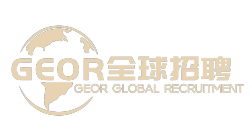Enterprise Overseas Employment Strategy: Synergetic Strategy of Law, Culture and Operation
Enterprise Overseas Employment Strategy: Collaborative Strategy of Law, Culture and Operation
As globalization accelerates, it has become an important way for enterprises to employ foreigners to work abroad to expand the international market and obtain cutting-edge technology. However, cross-border employment involves complex issues such as labor laws, visa policies, cultural differences and tax compliance in different countries. The following provides systematic solutions for enterprises from the four dimensions of legal framework construction, cultural integration management, operational support and risk prevention and control.
1. legal framework building: ensuring employment compliance
- work visa and residence permit :
- understand the visa type of the target country, for example, the United States H-1B (professional and technical personnel), L-1 (multinational companies to deploy), Germany's EU blue card (highly skilled personnel) and so on.
- Some countries require companies to provide local employment guarantees or deposit deposits, and financial and process planning needs to be made in advance.
- labor contract and protection of rights and interests :
- The contract must comply with the local labor law, for example, clear salary standards (including overtime), working hours system (e. g. 40 hours per week in the EU), dismissal conditions (e. g. 30 days' notice and compensation in France).
- Avoid the use of "probation period" and other common domestic provisions, some countries prohibit or strictly limit the probation period.
- tax and social security compliance :
- clarify the tax obligations of foreign employees, such as federal tax, state tax and social security tax in the United States, and resident tax and health pension in Japan.
- Some countries have signed double taxation agreements with China and need to assist employees in applying for tax credits.
2. cultural integration management: improve the efficiency of team cooperation
- cross-cultural communication training :
- provide foreign employees with workplace culture training in the target countries, for example, the united states emphasizes direct communication and japan emphasizes hierarchical etiquette.
- Provide cross-cultural sensitivity training for local teams to reduce misunderstandings caused by cultural differences (e. g. decision speed, feedback methods).
- team integration mechanism :
- Set up the role of "cultural ambassador", and employees who are familiar with the culture of both countries will help the new employees to adapt to the environment.
- regularly organize multinational online meetings or offline activities, such as quarterly cultural sharing meetings and annual multinational group building.
- flexible working mode :
- to solve the time difference problem, the "core working time flexible time period" system is adopted, for example, 10:00-15:00 is stipulated as the online time period for all employees.
- Provide remote office support, such as high-speed networks, noise reduction equipment, and multi-lingual collaboration tools.
3. operation support guarantee: build an efficient collaboration environment
- digital collaboration platform :
- Deploy multilingual project management tools (such as Asana, Trello) and instant messaging software (such as Slack, Microsoft Teams).
- Provide cloud storage services (e. g. Google Drive, Dropbox) to ensure secure file sharing.
- salary and welfare system :
- salary should reach the local market level, please refer to the platform data such as Glassdoor and Payscale.
- Benefits must cover health insurance, paid leave (e. g. at least 20 days per year in EU countries), and career development subsidies (e. g. reimbursement of training expenses).
- Localized resource docking :
- Cooperate with local human resources agencies to solve problems such as emergency recruitment and temporary employment.
- Access to local service providers, such as legal counsel and accounting firms, to ensure compliance.
4. risk prevention and control: avoid potential legal and operational risks
- data privacy protection :
- comply with GDPR (EU), CCPA (California, USA) and other regulations to ensure the legal compliance of employee personal information collection and storage.
- Avoid cross-border transmission of sensitive data, such as the need to transfer the need to use encryption technology or sign a data transfer agreement.
- labor dispute response :
- formulate internal labor dispute handling procedures, such as setting up HR mediation committee or introducing third-party arbitration.
- Labor contracts and policies are reviewed regularly to ensure compliance with the latest legal requirements.
- emergency plan :
- to natural disasters, political turmoil and other risks, to develop staff evacuation, salary and other emergency plans.
- Purchase international travel insurance for foreign employees, covering medical treatment, emergency rescue and other scenarios.
Conclusion
The employment of foreigners by enterprises to work abroad should be coordinated from four aspects: legal compliance, cultural integration, operational support and risk prevention and control. By improving the visa and tax system, improving cross-cultural management capabilities, building a digital collaboration environment, and formulating emergency plans, companies can not only efficiently attract and retain overseas talents, but also build flexible and compliant multinational teams in global competition. In the future, with the popularity of telecommuting and hybrid working models, enterprises will need to continuously optimize their transnational employment strategies to adapt to the changing international market environment.
